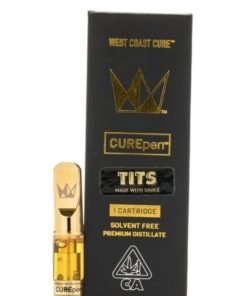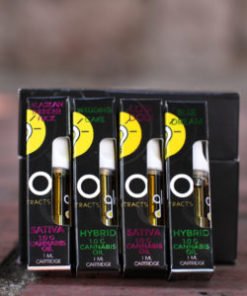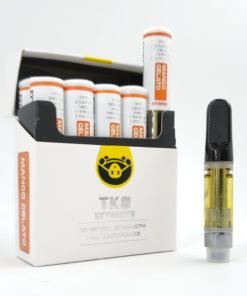Hemp’s Resurgence: Transforming Industry and Sustainability
Summary – 1 Minute Read.
The legalization of hemp through the 2018 Farm Bill marks a significant turning point, allowing this historically important plant to re-enter the market and potentially transform various sectors. Hemp’s uses span from traditional applications like textiles and ropes to modern innovations such as biodegradable plastics and carbon sequestration, which address environmental concerns. In health and wellness, hemp-derived products are gaining popularity for their non-psychoactive benefits. This renaissance presents economic opportunities for rural communities while promoting sustainable practices, highlighting the importance of learning from past policies to fully leverage hemp’s potential for future generations.
Hemp’s Resurgence: Transforming Industry and Sustainability
The legalization of hemp marks a pivotal moment in agricultural and industrial history. This plant, once a staple in early American industry, was sidelined for decades due to its association with psychoactive cannabis varieties. However, the 2018 Farm Bill changed the course by legalizing hemp, allowing it to re-enter the market and potentially revolutionize multiple sectors.
Historically, hemp has been cultivated for thousands of years across various civilizations. It was used for making textiles, ropes, and even as a food source due to its rich nutrient profile. During World War II, the “Hemp for Victory” campaign highlighted its strategic importance when farmers were urged to grow hemp to support war efforts. Yet post-war policies shifted dramatically under anti-cannabis sentiments, leading to restrictions that stifled its cultivation.
Today’s legal landscape presents an opportunity not only to revive these traditional uses but also to explore new applications in sustainability and health. Hemp’s potential as a biodegradable alternative to plastics is gaining attention amidst growing environmental concerns. Its ability to sequester carbon from the atmosphere positions it as a viable crop for combating climate change.
In the realm of health and wellness, products derived from hemp are expanding rapidly. The non-psychoactive compound THCa is gaining popularity among consumers seeking natural remedies without intoxicating effects. As interest grows, many are looking into options like [Buy THCa] products that promise therapeutic benefits.
Did You Know? Hemp can produce four times more paper per acre than trees over a 20-year period!
Economically, this renaissance could be transformative for rural communities by providing farmers with new cash crops and creating jobs in processing industries. The shift towards sustainable practices is also encouraging innovation within both local economies and global markets.
As we stand on the brink of what could be another industrial revolution fueled by hemp, it’s essential to remember how past policies shaped our current reality. By learning from history’s lessons—both successes and failures—we can better harness this plant’s potential for future generations while addressing pressing global issues such as environmental degradation and economic inequality.
The journey of hemp from prohibition back into mainstream acceptance underscores its resilience and adaptability—a testament to nature’s capacity for renewal when given the chance.
Frequently Asked Questions (FAQs):
Q: What was the impact of the 2018 Farm Bill on hemp?
A: It legalized hemp, allowing market re-entry.
Q: How was hemp used historically?
A: For textiles, ropes, and as a food source.
Q: Why did hemp cultivation decline post-World War II?
A: Anti-cannabis sentiments led to restrictions.
Q: What environmental benefit does hemp offer?
A: It can be a biodegradable alternative to plastics.
Q: How does hemp contribute to combating climate change?
A: By sequestering carbon from the atmosphere.
Q: What is THCa in relation to hemp products?
A: A non-psychoactive compound with therapeutic benefits.
Q: How can hemp impact rural economies economically?
A: By providing new cash crops and creating jobs.
Helpful Links:
-
United States Department of Agriculture (USDA) – The USDA provides comprehensive information on agricultural policies, including the legalization and regulation of hemp cultivation in the United States.
-
National Institute of Food and Agriculture (NIFA) – NIFA offers research and resources related to hemp production, focusing on its agricultural benefits and potential economic impact.
-
Hemp Industries Association (HIA) – HIA is a trade association that advocates for the commercial use of hemp, offering insights into industry trends and legislative developments.
-
Food and Drug Administration (FDA) – The FDA provides guidance on the regulatory status of hemp-derived products, including those used in food, cosmetics, and health supplements.
-
Environmental Protection Agency (EPA) – The EPA discusses hemp’s role in sustainable agriculture and its environmental benefits, such as carbon sequestration capabilities.
-
The Hemp Business Journal – This publication covers market analysis, business trends, and innovations within the hemp industry.
-
National Conference of State Legislatures (NCSL) – NCSL tracks state-level legislation regarding hemp cultivation and usage across different jurisdictions in the U.S.
-
Project CBD – Project CBD explores scientific research on cannabinoids like THCa found in hemp, highlighting their potential therapeutic applications.
Definition:
Hemp: A variety of the Cannabis sativa plant species that is grown specifically for industrial or medicinal use.
Resurgence: The increase or revival after a period of little activity, popularity, or occurrence.
Sustainability: The ability to maintain or support an activity or process over the long term without depleting resources or causing harm to the environment.










